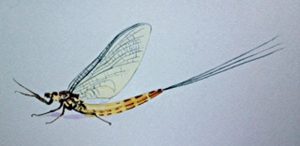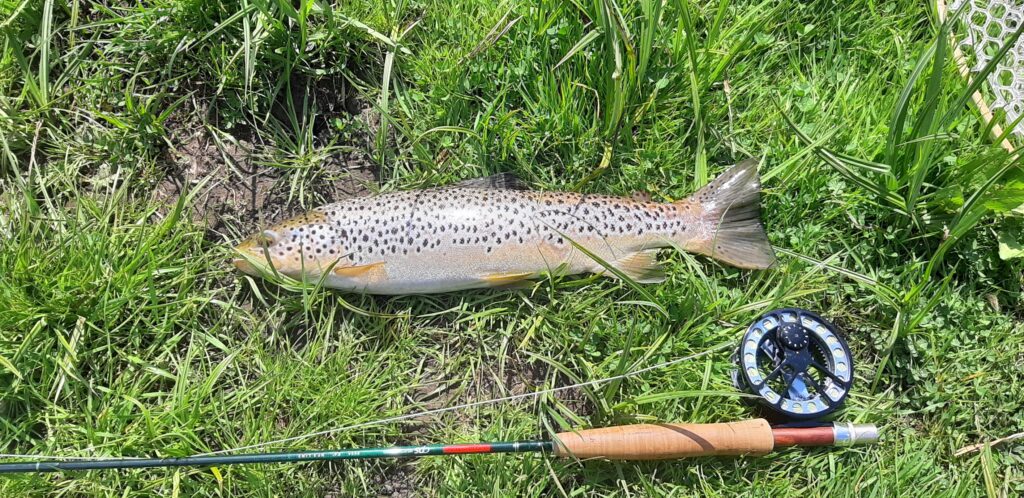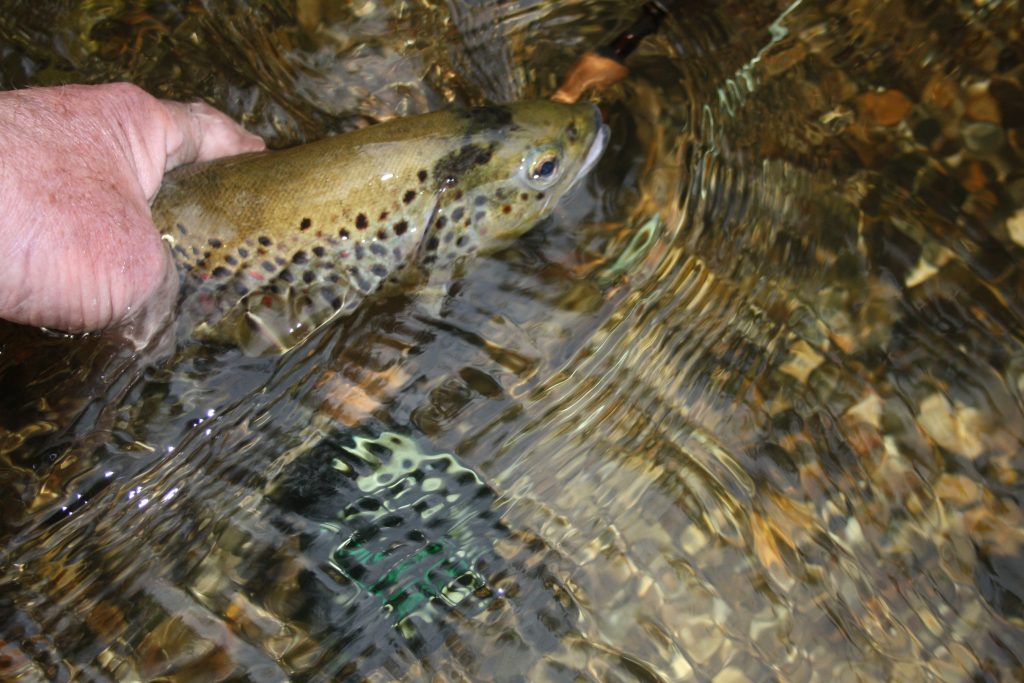Fishing the River Wensum and catching its trout can be a challenging but ultimately rewarding experience. It is not always easy to find and see fish and they are not the most free rising. The river varies from fast flowing shallow stretches to deeper areas with pools, often holding larger fish which are best fished with a nymph. Fly hatches occur throughout the season, with good hatches of fly including Mayfly, caddis in spring and summer and iron blues in late September or October. Early season hatches of large dark olives are also common. Generally speaking, good watercraft is required and because the water is usually low and clear in summer, the fish are easily put down.
Tackle
Rods between 8 and 9 feet in length for 3-, 4- or 5-weight floating lines. Rarely will anything heavier be needed. Fishing with a shorter rod can be difficult where the bankside vegetation is high or you can’t get close enough to the edge of the bank as it can then be difficult to manage your flyline on the water properly.
What flies to use
The most important thing is to use flies in which you have confidence even if they don’t appear on the following list of suggestions. Trout are opportunist feeders and if you can present a fly to a fish when and where it is expecting to see a food item, then you can catch it. Exact imitation is not always, if ever, required. It’s more important to find a feeding fish.
Dry flies: Adams and Parachute Adams, small Grey Wulf for fish feeding on Mayflies, “F” Flies, Klinkhåmers and various emerger patterns, Elk Hair Caddis, CDC and Elk, and Humpies
When Mayfly are hatching it is well worthwhile having a few hatching/emerger/Mayfly cripple patterns, such as Peter Hayes’ Hayestuck, with you as hatching flies provide an easy meal for a fish.

Nymphs: Pheasant Tail nymphs, with and without beads, Gold Ribbed Hare’s Ear nymphs again with and without bead heads, and hatching caddis
Waders and wading
Although it is by no means essential to wade, there are stretches that can be fished by wading and the mill straight can only be fished from in the river. Check that you can see the bottom before getting into the river and when you do, be prepared to find that the bottom is soft and silty. If it is get out!
Chest-high breathable waders are best. When not wading, they will keep your legs dry if the bankside vegetation is wet or it starts raining.
How and where to fish
“Time spent in reconnaissance is seldom wasted.” is an old Army adage which is as applicable to fishing as it is to the battle field. This quote has been attributed to the second World War German Field Marshal Rommel, and also the Duke of Wellington. Spend a few minutes on the river bank watching the river and seeing what, if anything, is happening before tying-on a fly and starting to fish. To fish the river successfully you need a good understanding of it. This comes from spending time on the river. Spend time getting to know the river, its moods and quirks. As is mentioned elsewhere, helping with working parties is a great way to find out more about the river, its shallow runs and deeper pools.
Although fish will be seen (rising) and caught in the middle of the river, many are caught close-in to the banks where the bankside vegetation provides good overhead cover. When fish are not rising or to be seen feeding sub-surface you will have to go and look for them. A good pair of Polarised glasses is a big help.
Trout are opportunist feeders so that very often a well-presented fly that arrives where and when they are looking for a food item will do the business. Although hatches on the Wensum tend to be ‘simple’ rather than ‘complex’ – when two or perhaps three different flies are hatching – fish can be surprisingly picky at times. This could be because they are feeding on hatching nymphs, caddis pupae swimming to the surface or Mayflies that are struggling to hatch, rather than ones which have hatched successfully and can be seen floating on the surface.
Recording and measuring your catch
The wild trout population of the river is regularly supplemented with some stock fish and once above 10 inches in length or so it can be quite difficult to differentiate one from the other. If obvious fin deformities are visible identification can be quite straightforward, but generally our stock fish are in excellent condition and many may have been in the river for several seasons, so colouration is often very similar to indigenous fish. Stock fish are the only fish that may be killed, but if you are in any doubt, please return the fish as carefully as you can.

Please measure and record the length of any or all wild fish caught. The most reliable measure is size, and you can safely assume that any trout under 10-12 inches in length is a wild fish. You can measure fish by putting a rubber band or length of elastic round the handle of your landing net or the bottom section of your rod. Hold the fish against your net handle or rod with one end of it at a fixed point and then move the elastic to the other end of the fish. Once you have returned the fish the water you can then measure its length with a tape measure. Waterproof dressmaker’s tape measures can be bought very cheaply on Ebay.

